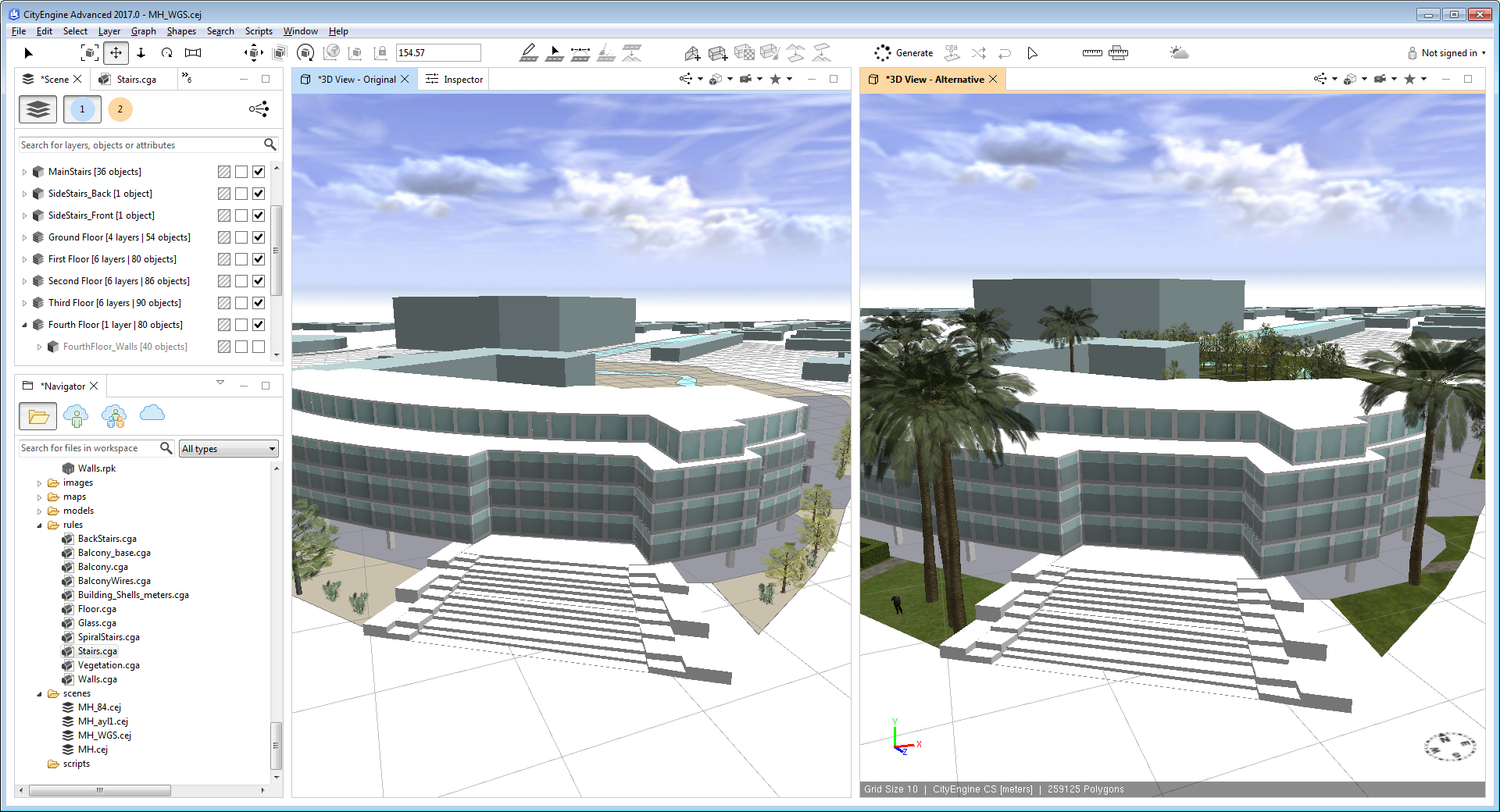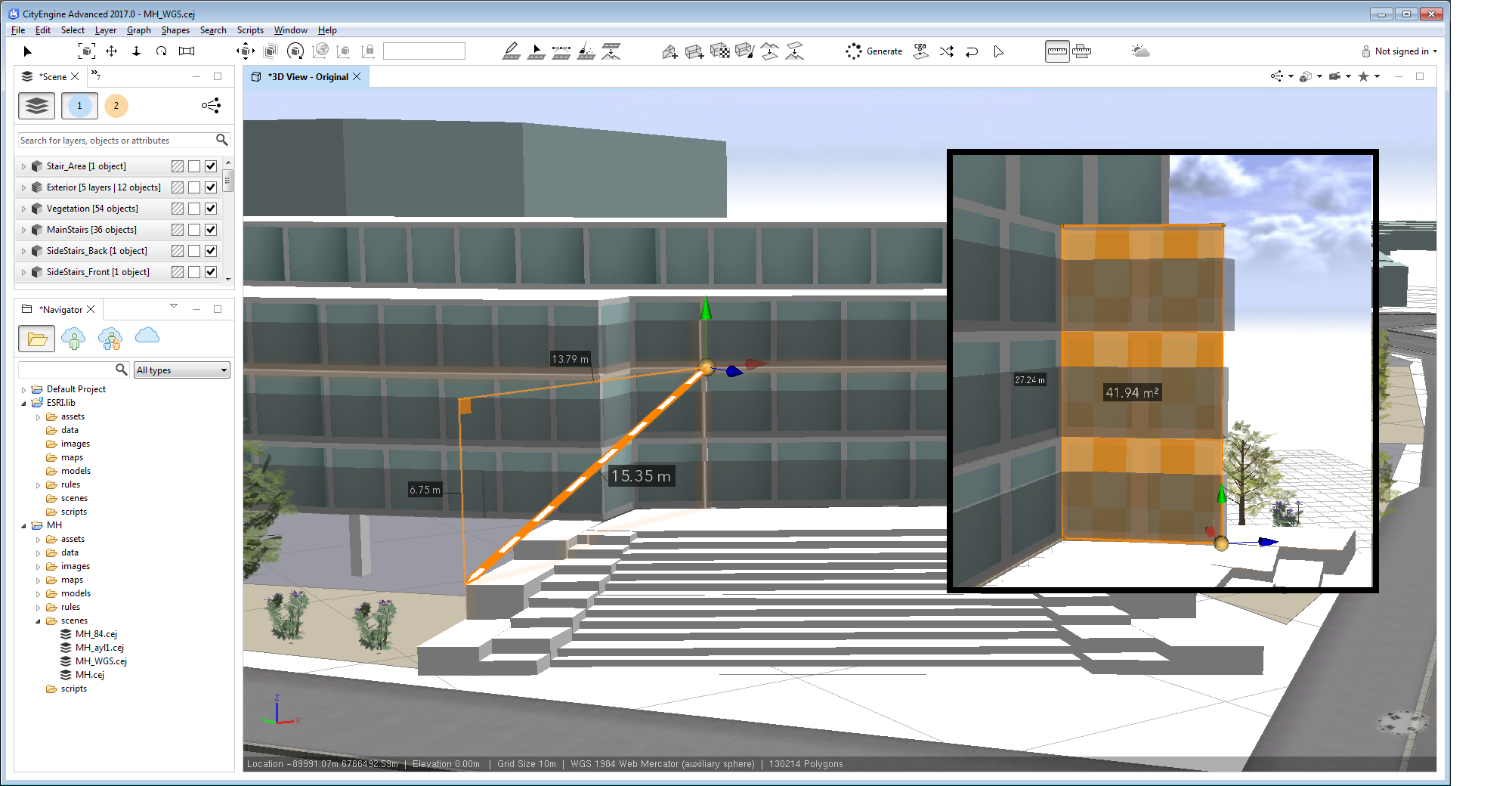How do you design an integrated city for 70 different species of anthropomorphic animals? It turns out the answer is to use CityEngine. Disney’s 2016 film Zootropolis wasn’t the first time they used CityEngine to generate 3D cityscapes, but it did present some new challenges and you can hear about them in their UC presentation. Maybe the release of CityEngine 2017 last month will help them to create their next imagined city.
For those that haven’t come across it, CityEngine is a stand alone application that uses procedural rules to efficiently generate 3D urban landscapes. As well as fantastical cities for films and games, it is also used as an effective and efficient urban planning tool. Being able to exchange data with the rest of the ArcGIS family means that planners can work with accurate real world geography and export their models for analysis in Desktop and sharing via web scenes. This latest release of CityEngine continues to build on this role.
If you have used CityEngine before then the most obvious difference with 2017 will be the user interface. It’s been given a more modern look and a number of the menus have been rationalised. 3D navigation has been improved, as an occasional user I like being able to adjust the current view using the arrow keys. The revamp extends to the dashboard functions and you can now create and arrange multi-chart dashboards. There are also new CGA (shape grammar language) rules to take proximity to other objects into account and CityEngine’s data export options have been improved.
Scenarios
One of the big new features is the ability to add scenarios to a scene. This makes it easy to create variants of the model and view them side by side. Maybe we could give our head office an exotic air with a different planting scheme:

The great thing about the scenarios (you can have several) is that it’s easy to choose which objects are included in each scenario with the Move to scenario and Delete from current scenario options. The dashboard functions in CityEngine have been made scenario sensitive so you can compare key indicators (like floor area) across the options.
Local edits
Another big change is the introduction of local edits. This gives users the ability to tailor the design of key buildings without having to resort to changing or duplicating the procedural rule. Examples include resizing some of the windows using handles or changing the usage type of an individual floor. A new tutorial has been added to the help pages to get you started.
Interactive measure tools
Being able to take distance and area measurements from a plan is an important capability and the new interactive tools make this easy. The tools use “laser line” feedback to make it clear what is being measured and how it relates to surrounding objects. It also supports snapping to the objects and allows you to adjust the active measurement – such as tweaking the corner of the area measurement in the inset:

The CityEngine 2017 release notes describe the full set of changes. If you haven’t watched the UC presentation yet, don’t miss the chance to hear how to invent a whole new urban geography.
![]()
Brandon Jarratt (General TD, Walt Disney Animation) also took part in an Esri technical webinar with this week, giving some additional insights in to their approach in the QA section.